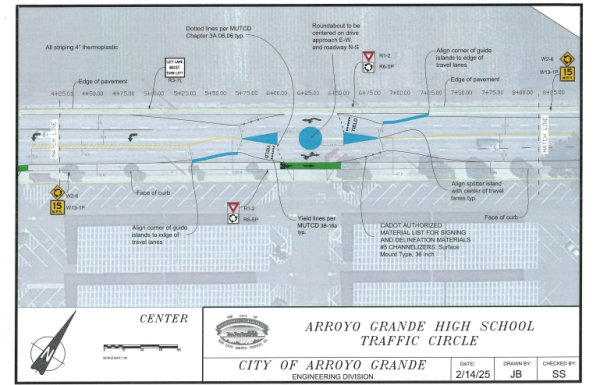Dawn of the Second Age of Exploration: Journey to the Red Planet
The face of Mars seen from outer space. Some ice can be seen at the poles.
Elon Musk, the world’s richest man, has been exploring the idea of Mars colonization for more than a decade in hopes to inspire the human race to strive for exploration. In January 2020, he responded to a tweet asking if he plans to have a million people on Mars by 2050, simply saying, “Yes.”

On April 25th he said, “a bunch of people will probably die.”
No doubt, human exploration has cost lives in the past, but the expense won’t just be that of human lives.
The cost of achieving a goal of that size in that time frame is expected to be in the trillions of dollars.
However, by charging a traveling fee, and promising to have a sustainable economy on Mars, Musk hopes that this larger cost will be covered. He has said that the desired ticket cost is about $100,000 but colonists won’t have to pay all of that upfront. One million people can certainly do a lot of work, but what will they be working on?
Think of a city with a million people. Think of all the infrastructure needed to support those people. All of that infrastructure needs construction and maintenance. People on Mars will do just about all of the jobs people have on Earth, from hairstyling to habitat-building, from geologist to gynecologist. Farming, surveying, teaching, transportation, retail, and even brewing will all be jobs on the red planet. All of these people will pay each other for their work, and with money circulating, the economy will hopefully grow. Musk has also stated that the Martian economy will probably run off cryptocurrency, which has been dubbed ‘spacecoin’ by the aspiring inter-planetary pilgrims of the internet.
Speaking of pilgrims, there are many similarities between the journey to the new world in the 15th century and the journey to the new planet in the 21st. The increased risk of death, the guarantee of a harder life for the promise of a better one…even the transportation time is very similar. Once people in Europe saw that the colonies of the new world were sustainable and beginning to thrive, the population skyrocketed. The hope is that the same will be true for Mars. There is an abundance of people who would be willing to board a Starship and get to work building the future for humanity, and with a projected population on Earth of over 10 billion by 2050, there isn’t a shortage of people to inspire. Elon Musk’s Twitter account has 48.6 million followers, meaning that if just 2% of his followers are down for lift-off, the colony would have no trouble filling its spots.

Musk hopes for boots on the ground by 2024 with colonizers heading over by the end of the decade, so it will be quite a few years before the first people that land will see something that resembles ordinary day-to-day life. In the meantime, they’ll need to set up massive solar arrays, hydroponic farms, living quarters, as well as oxygen, water, and rocket fuel production sites, among many other tasks. Once all of the pieces are in place, Musk hopes that the colony would be entirely self-sufficient and self-governing. Assuming people want to move there, it looks like the plan could succeed.
However, after running the numbers on what it would take to set up all of that infrastructure, it appears that Musk has severely underestimated the number of Starships necessary to get the Mars colony to self-sufficiency. Each colonist requires a certain amount of cargo to survive. This ratio is estimated to be 10lbs of cargo to each 1lb of passenger. So for each rocket ship of people, 10 will need to be cargo. This complicates the math because, with Elon’s plan, he seems to have forgotten about a vast majority of the cargo needed to support those people because 1,000 ships per launch cycle cannot carry nearly enough cargo to support the desired amount of people. The cargo capacity of the Starship rocket is 100 tons.
YouTuber RealLifeLore made a video about Elon Musk’s plans.
In the video, he states, “With just twelve transfer windows available between 2025 and 2050, that would be an average of 8,333 ships sent during each of those windows. And not only that…you would essentially need double the amount of those ships as half of them would be stuck on the red planet waiting to come home until the next transfer window opens…It doesn’t seem unreasonable to assume that 15- 20 thousand starships would be required over the 25-year time frame. I mean that’s just not super feasible.”
The video has a lot of other really interesting information and it is worth spending 10 minutes watching. In order for SpaceX to afford that many rocket ships, the cost of the trip per traveler would either need to be in the billions of dollars, or the prospective 2050 goal must be moved to allow the one to two thousand Starships that Elon can afford enough time to get that infrastructure moved to Mars. Either that or Musk himself will need to throw a lot of his own money into the equation.
However, even Elon doesn’t have the dough needed for that as of now, but there are a few avenues to potentially generate that much revenue. A couple of them are his Starlink internet plan that has worldwide gigabit coverage (think of how much money billions of people paying for the internet would generate) or asteroid mining. One such asteroid named Psyche, a solid metal core of a long-dead planet, could single-handedly pay for the entire colony if it was mined successfully, as it is estimated to be worth about $10,000 quadrillion.
In order for humanity to achieve Elon Musk’s goal to have a colony of over a million people living self-sufficiently on Mars by 2050, we will need to continue to push the boundaries of our technology, we will need to think outside the box, or more accurately the globe, and we must inspire every generation to strive for this goal. Reaching that goal probably isn’t realistic in that time frame, but it’s possible eventually, even if it takes a few more years. This is not just a SpaceX venture, this is one of the largest missions in the history of our species. We will be alive to see the beginning of humanity’s next planet, the first of potentially thousands.

To see images such as the ones used in this article, head over to Nasa’s Mars Exploration Image Gallery. The Eagle Times would like to thank all of those who are working on this important explorative effort.

My name is Hudson Reynolds and I am a senior at AGHS. I always wanted to be a part of a student-run newspaper or radio and I am so glad that I got the...










